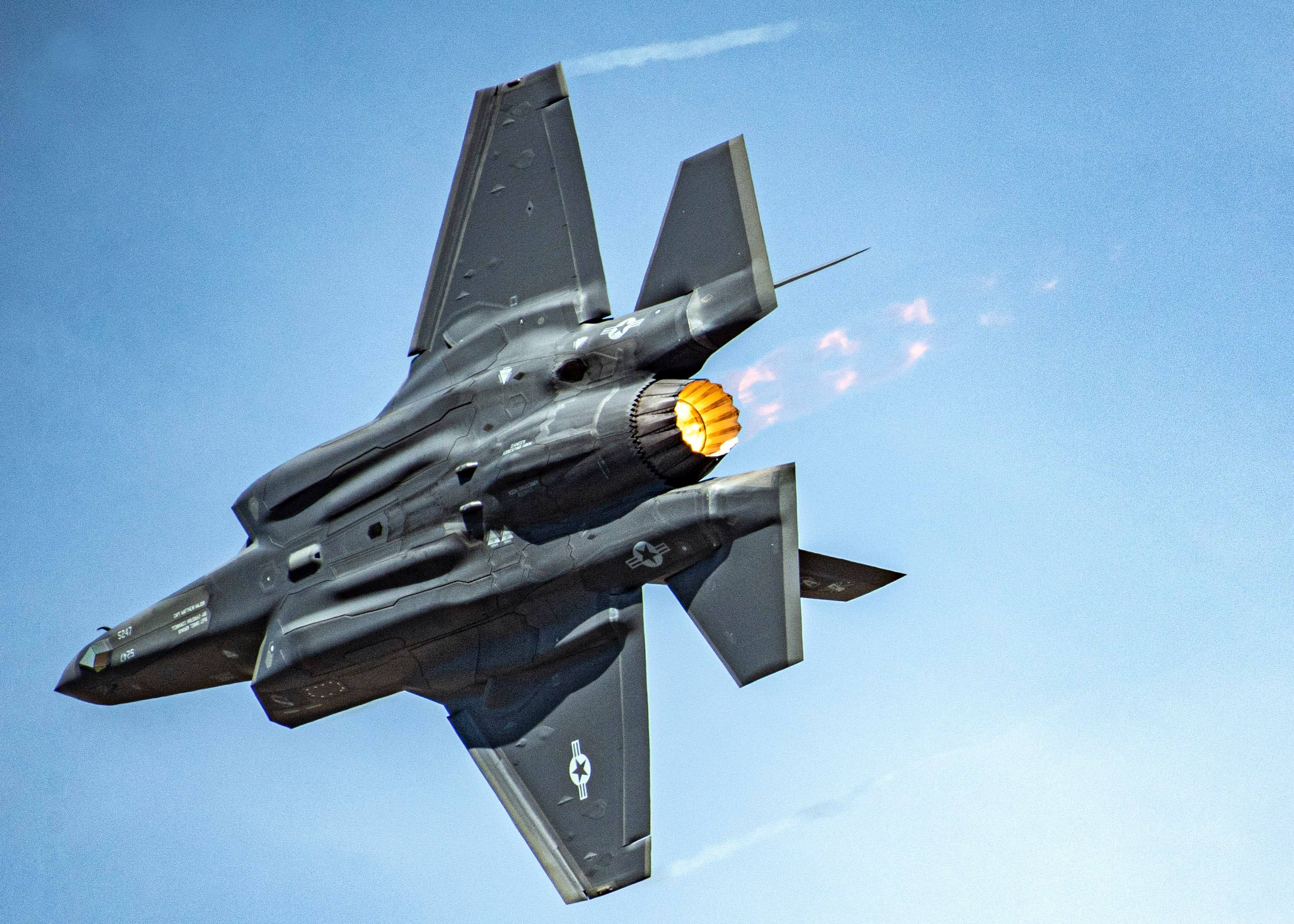SOURCE: RAUNAK KUNDE / NEWS BEAT / IDRW.ORG


In a significant development for India’s defense modernization, the U.S. government is set to make a formal offer for the sale of Lockheed Martin’s F-35A Lightning II stealth fighters to India in June 2025, according to sources cited by the Indian Defence Research Wing (idrw.org).
This follows earlier indications from U.S. President Donald Trump during a February 2025 meeting with Indian Prime Minister Narendra Modi in Washington, where he announced plans to boost military sales to India, including the F-35. The offer was reiterated by Vice President JD Vance during his visit to India in April 2025, signaling strong U.S. intent to integrate India into the elite group of F-35 operators. The proposed deal, structured as a government-to-government (G2G) Foreign Military Sales (FMS) agreement, promises early deliveries starting as early as late 2027, bypassing India’s Multi-Role Fighter Aircraft (MRFA) program, which focuses on 114 jets to be license-built in India with technology transfer (ToT).
The F-35A, the conventional take-off and landing (CTOL) variant of the Joint Strike Fighter, is a fifth-generation multirole stealth aircraft designed for air superiority, ground attack, and intelligence, surveillance, and reconnaissance (ISR) missions. Equipped with advanced radar-absorbing materials, a low radar cross-section (RCS), and integrated sensor suites like the AN/APG-81 AESA radar, it offers unmatched stealth and interoperability. The aircraft’s appearance at Aero India 2023 and 2025 in Bengaluru showcased its capabilities, impressing Indian observers with its agility and advanced systems. The U.S. offer, as per idrw.org, includes an “Adir-type configuration” tailored for India, incorporating BNET software-defined radios (SDR) and indigenous Identification Friend or Foe (IFF) systems, similar to Israel’s F-35I variant, which operates independently of U.S. mission data servers.
The G2G FMS deal, facilitated by the Pentagon, ensures standardized pricing and delivery terms akin to those for the U.S. military, potentially reducing costs compared to commercial sales. Unlike the MRFA program, which emphasizes local production and ToT to bolster India’s defense industry, the FMS route prioritizes off-the-shelf procurement with minimal modifications. This approach promises faster delivery, with the first F-35As potentially arriving by late 2027, addressing the Indian Air Force’s (IAF) urgent need to counter China’s growing fleet of J-20 and J-35 stealth fighters and Pakistan’s planned acquisition of J-35A jets by 2028–29.
The U.S. push to sell F-35s to India aligns with broader geopolitical goals, particularly countering China’s military expansion in the Indo-Pacific. India, with its depleting fighter squadrons—down to 31 from an authorized 42—faces mounting pressure to modernize its air force. Between 2014 and 2024, China added 435 fighter aircraft, while India’s fleet shrank by 151, according to the ISS Military Balance. The IAF’s reliance on aging Russian platforms like the Su-30 MKI and MiG-29, coupled with delays in indigenous programs like the Advanced Medium Combat Aircraft (AMCA), expected to enter service only by 2034, underscores the need for advanced fighters.
Trump’s February 2025 announcement, followed by Vance’s reaffirmation, reflects a U.S. strategy to deepen defense ties with India, capitalizing on Russia’s weakened position due to sanctions and the Ukraine conflict. India has already purchased over $20 billion in U.S. defense equipment since 2008, including 31 MQ-9B drones in 2024, and is expected to spend $200 billion on military modernization over the next decade. The F-35 offer positions India alongside NATO allies, Israel, Japan, and Australia, enhancing its strategic alignment with the U.S. while addressing trade imbalances through increased Indian imports of U.S. oil and gas.
India’s MRFA program, launched to procure 114 multirole fighters with significant ToT and local production, has seen contenders like the Dassault Rafale, Boeing F-15EX, Lockheed Martin F-21, and Sukhoi Su-35, with the Rafale as the frontrunner due to its existing integration with the IAF’s 36 jets. The program emphasizes “Make in India,” aiming to bolster domestic manufacturing through partnerships with firms like Hindustan Aeronautics Limited (HAL). However, the F-35A offer sidesteps this framework, opting for a direct FMS deal with no ToT, which could limit India’s ability to integrate indigenous systems or upgrades, as seen with the IAF’s Jaguar fleet.
The FMS route offers speed and certainty, with deliveries potentially starting in 2027, compared to the MRFA’s prolonged tender process, which remains stalled. However, it comes with challenges. The F-35A’s flyaway cost is approximately $82.5 million per unit, with export prices reaching $100–110 million, excluding weapons and logistics. A fleet of 40–50 F-35s, as speculated, could cost $4–5.5 billion, with lifecycle costs potentially exceeding $100 billion over decades, as estimated for Canada’s 88-jet fleet. Additionally, U.S. export controls impose stringent end-user agreements, requiring safeguards against technology leaks, particularly given India’s operation of Russian S-400 systems—a concern that led to Turkey’s exclusion from the F-35 program.
The F-35 offer faces several hurdles. India’s deep defense ties with Russia, including the S-400 and Su-30 MKI, raise U.S. concerns about technology security, especially given Russia’s potential to access F-35 data via BRICS cooperation. The U.S. requires daily activation codes for F-35 operations, and only the Israeli F-35I Adir operates independently, a model India may seek but is unlikely to secure fully. Additionally, the F-35’s maintenance issues—141-day repair times and a high critical failure rate, as per a 2024 Pentagon report—could strain the IAF’s logistics, especially without local production.
Geopolitically, the deal aligns with U.S. efforts to counter China, but India’s neutral stance in the Russia-Ukraine conflict and its “Make in India” focus complicate acceptance. The opposition Congress Party has criticized the F-35’s cost and reliability, citing Elon Musk’s past remarks calling it “junk.” Russia’s counter-offer to produce Su-57 Felon jets locally with full ToT aligns better with India’s indigenization goals, though the Su-57’s limited combat experience and higher RCS make it less appealing than the F-35.
NOTE: Article cannot be reproduced without written permission of idrw.org in any form even for YouTube Videos to avoid Copy right strikes. Websites doing illegal reproductions will get DMCA and Legal Notices.